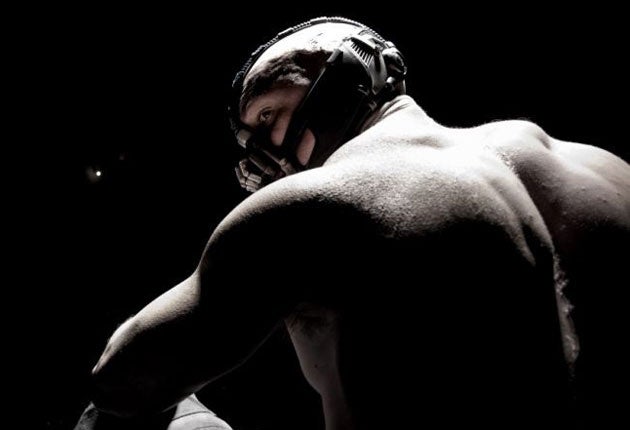The Dark Knight Rises: More fiendish than the Joker
The high-concept viral campaign for 'The Dark Knight Rises' might be the smartest film marketing yet

Your support helps us to tell the story
From reproductive rights to climate change to Big Tech, The Independent is on the ground when the story is developing. Whether it's investigating the financials of Elon Musk's pro-Trump PAC or producing our latest documentary, 'The A Word', which shines a light on the American women fighting for reproductive rights, we know how important it is to parse out the facts from the messaging.
At such a critical moment in US history, we need reporters on the ground. Your donation allows us to keep sending journalists to speak to both sides of the story.
The Independent is trusted by Americans across the entire political spectrum. And unlike many other quality news outlets, we choose not to lock Americans out of our reporting and analysis with paywalls. We believe quality journalism should be available to everyone, paid for by those who can afford it.
Your support makes all the difference.Promotion for Warner Brothers' eagerly anticipated third and final instalment of their interpretation of the Batman story, The Dark Knight Rises, began last week in the most mischievous of fashions. Fans of the forthcoming film, directed by Christopher Nolan, were left bemused when the official website of the film launched on Thursday and consisted simply of a black screen and the sound of monks chanting. But what many would have mistaken for glitch was the precursor to an incredibly cunning viral marketing campaign.
By Friday morning fans had revealed that if the mysterious chanting was played through a programme that visualises audio files, a Twitter hashtag that reads #TheFireRises is displayed. Fans that tweeted this hashtag found their Twitter avatars were then used to form a montage on the website, which gradually revealed an image of actor Tom Hardy as the character Bane from the film.
This is not the first time that Warner Brothers have employed unconventional tactics to market the Batman films. In May 2007, ahead of the release of The Dark Knight, two competing websites focusing on the fictional election campaign of one of the film's characters Harvey Dent were established by interactive American marketing agency 42 Entertainment.
For more than 14 months, fans were encouraged to participate in a series of interactive marketing exercises designed to promote the film, including; sending emails, submitting photographs and joining scavenger hunts. When the film eventually did screen in the US in July 2008, it smashed the box office record for biggest opening day and the biggest opening week.
Christopher Nolan, the director of the Batman films, saw a similarly successful viral campaign launch his most recent film, Inception, which came at a cost of over $100 million, and included such extravagances as a specially designed mobile phone app. This investment paid off as Inception was a critical and commercial success. Is it possible to put these successes down to viral marketing?
In a word, no. High-profile viral hits, such as the Batman films and Inception, are offset by equally high-profile viral marketing flops. The disaster movie 2012, in which the world ends in the year 2012, had such an effective viral marketing campaign that Nasa was forced to set up a special webpage, reassuring people that the onset of the apocalypse was not in fact imminent. The film's critical reception and commercial success, though, were somewhat less attention-grabbing. "There is a misconception that buzz will always transfer into sales," says Matt Smith, co-founder of the digital media and marketing company The Viral Factory, responsible for the viral campaign to launch the 2008 film Cloverfield.
Smith believes that while viral marketing is becoming more important, it is by no means a silver bullet solution. "Viral marketing is becoming more mainstream than it was five years ago and we do expect to see it grow further, but it is still only one of many touch points." And while Smith considers the "engaging and interactive" methods involved in viral marketing to be effective ways of raising awareness of a forthcoming film, he does concede that they are not necessarily the most appropriate means in all cases. "Viral marketing is not for every film. Certain types of mainstream films with target audiences more plugged into TV as opposed to the internet may struggle."
Smith cites children's films as one example, and it is no coincidence that the most successful cinema viral marketing campaigns to date, have been those made for film genres that appeal to a "less mainstream" audience, such as sci-fi and fantasy. Nor is it a coincidence that in the case of Nolan, for instance, the campaigns have been backed up by a film that people want to see. As Smith puts it, "the post-launch buzz" created in the marketing phase, must be backed up by sufficient "post-release buzz" – ie, if your movie is more Knight Rider than Dark Knight, then you're in trouble.
Join our commenting forum
Join thought-provoking conversations, follow other Independent readers and see their replies
Comments